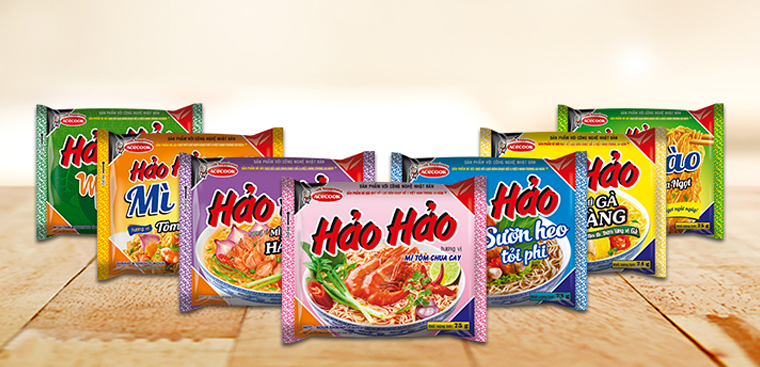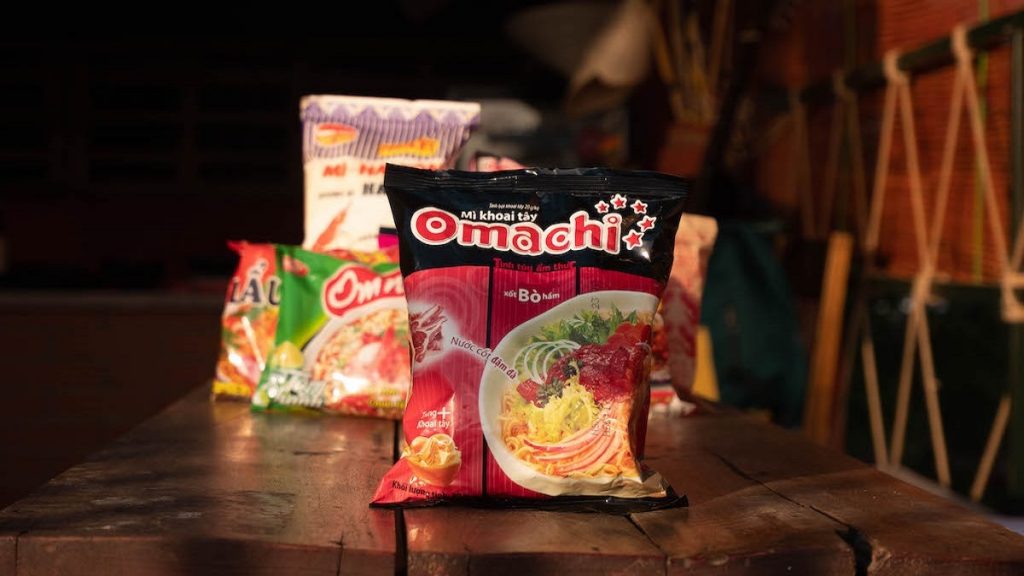The total revenue of Asia Food is a litte bit more than Masan Consumer. The two companies go in 2 other ways, one focuses on mid-range and the other focuses on high-grade products.
Vietnamese instant noodle market is the used to be dominated by Acebook for many years, up to 50% of market share. However, the market is blooming, and there are many players are joining the 100-million-people market, inside and outside.
In the last 5 years, Vienam is holding the fifth position in instant noodle consumption, and the volume is continuously growing.
The tripodal position is being shaped, other than Acecook, there are Masan Consumer and Asia Foods. The second position is now the hot place, and the competitors are aiming at the top position.
Masan Consumer is famous for its “Omachi” and “Kokomi” brands, and Asia Foods has “Gau Do” brand, which makes their name in recent 10 years. These are strong brands in the market.
According to Kantar Worldpanel, “Gau Do” holds the fourh position in the list of 10 most chosen food brands in the rural area, “Kokomi” in the seventh position. Rural area is a big market to instant noodle products while it consists of 70% of Vietnam population. The competion here is the most violent because the manufacturers use price as a strategy. 4 over 10 chosen brands by rural people are instant noodle, “3 Mien” brand by Uniben in second position, while “Hao Hao” in the next position. In urban cities, Hao Hao is the leading brand.

Back to Masan Consumer and Asia Foods, the race betwerrn these two manufactures is interesting while we see the figures.
Convenient foods range by Masan Consumer, mainly instant noodle, reachs 4.968 billion VND, increase 7%. Omachi is still leading the high-grade segment with 25% increase in revenue due to continuously marketing the unique experience of mixed noodle and bowl noodle. Masan Consumer aim for development through innnovation.
In year before, the instant noodle range of Masan Consumer grew 29% to 4.636 billion VND. The company launched “Omachi Cup” and other premium “Omachi Business Class” products.
Over the past 10 years, the profit from instant noodle of Masan Consumer has increased significantly, from 27% in 2010 to nearly 40%. This proves that their strategy is working well. Also in this perid, revunue from instant noodle increases 3 times.

Asia Foods is not worse, the plants from this company varies in 3 zones of Vietnam, and it has a history of 30 years manufacturing instant noodles in Vietnam. The plant in Binh Duong was put into operation in 2003 has a capacity of 1.25 billion products a year. Then 2011-2012, the company opened new plants in Bac Ninh and Da Nang province. Moreover, another plant is placed in Binh Duong (Asia Foods III).
Last year, Asia Foods (mother company) reaches 3.071 billion VND in revenue, up 9%. The total volume of 4 plants makes about 5.454 billion VND, bigger than Masan Consumer. Asia Foods products are not only sold in domestic market, but also exported to many Asian and Eastern Europe countries.
Profit from satelite plants of Asia Foods in fairly impressive, with 331 billion VND. This may because of management and sales cost is paid by mother company. And the mother company of Asia Foods also had a profit of 409 billion VND last year.

So, in the view of profit, Asia Foods is dominating Masan Consumer in the instant noodle segment. For example, in 2018, Masan Consumer has 4.800 billion VND revenue, 659 billion VND profit. Asia Foods mother company particularly has 877 billion VND profit, but this number is consisted of many other profits (maybe financial profit from satelite plants).
Take a look, we can see that Asia Foods in not playing much in the media, but the figures show that the company is not weak in comparison with Acecook and Masan Consumer.
Other than rural area market, Asia Foods also does the exporting and this brings a source of income for the company. It now has 50% market share of instant noodle inCambodia with the “Red Bear” brand. But, the market volume of instant noodel in Cambodia is not a big number.
